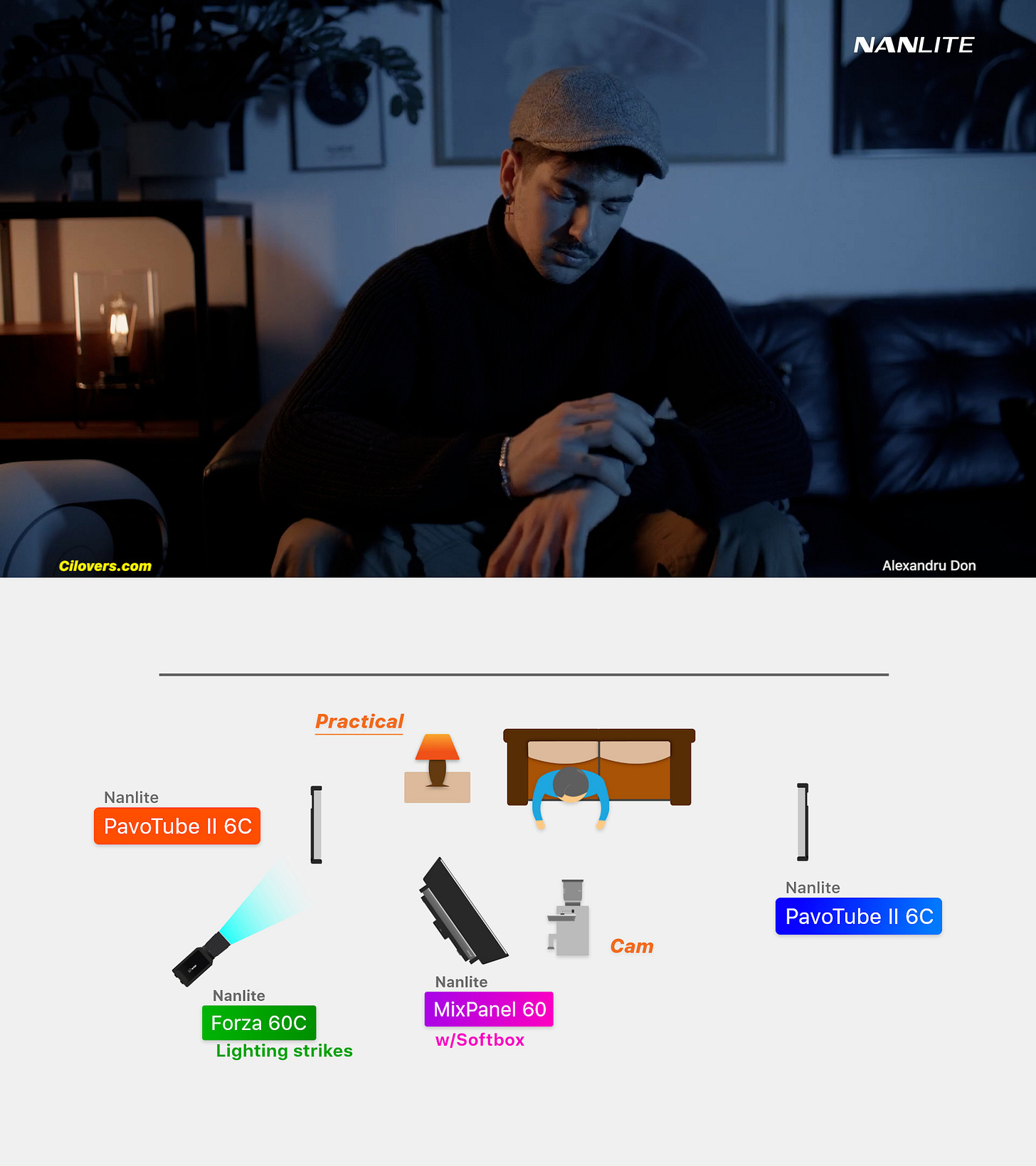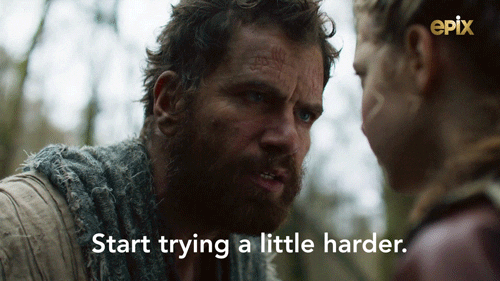Get yourself on set as much as you can. Filmmaking happens on set, not on social media…
I'll cover this phrase in The Director's Diary, the 4th section of this newsletter, so stay ahead if you dare to hear the Truth.
Cinematic Session
Part 1: YouTube
Editing Transitions Every Filmmaker Should Know
In this video, I'll go over a few edits so that whether you're a cinematographer, a director, an editor, or an audience member, you'll have a better idea of how and why films get assembled the way they do.
Lighting Mastery by DaVinci Resolve
In this video, Andbery shows us how to improve your video lighting with a simple and cool color technique by adding some light with DaVinci Resolve.
Advice for New Filmmakers - My Top 10
In this video, Danny Gevirtz gives his top 10 pieces of advice for novice filmmakers from personal experience. Ideal for those who are new to filmmaking.
Filmmaking Advice for 30 Minutes Straight…
In this 30-minute masterclass, 25 of the industry's top film directors share their invaluable experience and offer their best advice on all aspects of filmmaking.
Part 2: Instagram
I took the first setup from John Wick's Chapter 3: Parabellum.
The second is a photoshoot setup from the DP and photographer Fiorella Occhipinti with the talented and beautiful Jenny Ortega.
Then we have this simple but effective lighting setup from DP and Content creator Alexandru Don, Using Nanlite Lighting fixtures.
The diagrams are made with Ci-Lovers' Lighting Diagram Toolkit, which you can purchase by clicking here or going to the link below.
Feel free to save the posts for later. You may need them for your future projects as a reference or inspiration.
Reel Reads
1. The Art of Storytelling in Goodfellas: Analyzing the Film's Unique Narrative Structure
In this article, we're venturing into the world of the American mafia with Martin Scorsese's timeless masterpiece, Goodfellas. Since its release in 1990, this film has mesmerized audiences for over three decades with its exceptional storytelling and exploration of power, loyalty, and betrayal within the criminal underworld. So come along with me as we delve into the innovative techniques and narrative devices that make Goodfellas an authentic masterpiece of cinema.
2. Behind the Lens: How Lawrence Sher Captured the Essence of JOKER
Immersing ourselves in the visually arresting universe of Gotham City, we find ourselves captivated by the enigmatic tale of Arthur Fleck, a man grappling with inner demons and societal neglect in the critically-acclaimed film JOKER. The brilliant cinematographer Lawrence Sher is at the helm of this cinematic masterpiece, responsible for painting this evocative portrait.
In this enthralling exploration, we shall journey into the heart of Sher's artistic vision, examining the crucial role the film's overall aesthetic plays in accentuating the deeply poignant and psychologically complex narrative that has resonated with audiences across the globe.
3. Unearthing Apocalypto: 10 Intriguing Facts Behind Mel Gibson's Mayan Masterpiece
Mel Gibson's 2006 epic action-adventure film, "Apocalypto," is a cinematic masterpiece that continues to captivate audiences with its intense storytelling and powerful visuals. Set in the waning days of the Mayan civilization, the film offers a gripping tale of survival against all odds. As one of the most ambitious and unconventional projects in Gibson's filmography, "Apocalypto" is an unforgettable experience showcasing the director's dedication to authenticity and passion for exploring lesser-known historical periods.
In this blog post, we will delve into the unique aspects of the movie's production and unveil ten fascinating facts about "Apocalypto" that you probably didn't know. So, please sit back and join us on this journey through the mystique of ancient Maya, as seen through the lens of Mel Gibson's creative vision.
Film Buff Broadcast
1. RUSSELL CARPENTER Cinematographer
Team Deakins speaks with cinematographer Russell Carpenter (TITANIC, TRUE LIES, AVATAR: THE WAY OF WATER). We wade through the years-long process of shooting AVATAR: THE WAY OF WATER, and Russell describes the unique environment James Cameron created to realize the film. We compare working on smaller, less effects-heavy projects with the contrary and discuss the joys of knowing what you got on the day and the immediacy of that type of filmmaking. Enjoy!
2. Future Of Filmmaking: Will A Robot Replace You?
Could Al produce movies on demand? In this episode, Jason Brubaker explores how advanced Al technology may revolutionize the film industry.
"Imagine being able to select a genre, plot, and characters of the movie you want to watch. And in seconds, a film based on your preferences starts playing."
Can machines truly crack the code of what makes a movie authentically engaging? Can they account for the happy accidents and the grit that shape the charm of cinema? Or will the human touch always be irreplaceable? Listen right now. And share this important episode with your friends.
Director's Diary
Get yourself on set as much as you can. Filmmaking happens on set, not on social media…
The message is evident here. You have to get on set to get experience and build a relationship with people like you who are in the same industry.
How would you ask? There are plenty of ways of doing that. Either you shoot something, I don't know, maybe it's a short film, music video, whatever, or you get yourself on another set, perhaps you have friends who are working on a short film or a specific project, or you can do what I did before which was, being on a set for a volunteer to get experience, which was very difficult but was worth it.
Here's what I meant by Volunteer: I had a chance to early know the importance of being on set at a very young age, and to do so, I asked companies for volunteers. I know it sounds weird. That's how I started.
I worked freely for a music video production company as a Spark.
Sparks are in charge of the generators that power the outside broadcast vehicles and location lighting. They also monitor electricity usage during shooting to see if additional power resources are needed.
That was how I started. Working for free is hard, especially if you are like I was at that time; I mean, I had no computer, no camera gear, no money, nothing…
but the thing that kept me motivated was that dream of becoming a director one day.
And the Truth is, sometimes you have nothing except your dream.
So I worked for free for about four months and learned a lot during this time. But not only, I also made friends and built a relationship with artists and producers.
When you get yourself on set, your goals shouldn't be to gain experience but also to build a relationship because here's the thing:
In this industry, like I always said, it's not about what you know but who you know. The more people you know, the more friends you make, the more opportunities you get.
I guarantee you that sometimes when there's a new project somewhere, those friends are the ones who will call you first.
Why? Simply because they might love your work ethic, the way you behaved on set, or your personality. Those things count. So what does that mean? That means you should also be aware of these things: Your work ethic and your personality.
The rule is simple; no one loves working with grumpy or lazy guys on set. No one, even you.
So you should be on set as much as you can because that's how you truly learn what's happening on a film set and get opportunities. Real film sets are entirely different from the set you see on social media. There are a bunch of things to learn and to discover. And like I said, don't just sit there and watch tutorials on film lighting and filmmaking; you won't learn anything. Filmmaking happens on set and not on social media.
We could discuss many topics on that, but that's all I have for you for today. I hope you enjoyed this episode.
If you have any questions, please ask in the comment below, and I will reply in the next episode.















Am an actor here my number is +2349036266704